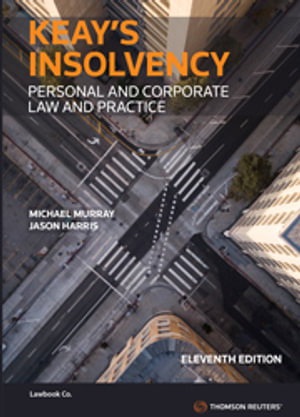Keays Insolvency has become a recognised text on personal and corporate insolvency law and practice in Australia, and it is widely used by practitioners and regularly cited in court. It offers both a detailed explanation of the law, supported by case law and commentary, and of insolvency practice, along with the authors critical analysis of the effectiveness and efficiency of the regime and views on its need for reform.
This edition explains Australian insolvency law under the Bankruptcy Act 1966 and the Corporations Act 2001, in light of the substantial case law and practice developments flowing from the changes made by the Insolvency Law Reform Act 2016 (ILRA). Further changes to the law under safe harbour, ipso facto and anti-phoenix company reforms, and under debt agreement reforms, and then further reforms again as a consequence of the economic and social impacts of COVID-19, are also explained. Keays Insolvency therefore now covers:the application of the ILRA reforms across personal and corporate insolvencythe safe harbour reforms under s 588GA of the Corporations Act and their 2021 reviewthe ipso facto reforms of 2018, the anti-phoenix reforms of 2019 and the redesign of Part 5.8A (protection of employee entitlements)the restrictions imposed on creditors as a consequence of COVID-19 and the concessions made to debtors, including in relation to safe harbourthe introduction of Part 5.3B small business restructuring and simplified liquidationthe reforms to debt agreements under the Bankruptcy Act and delayed consideration of a one-year bankruptcyincreased powers and activity of the ATO and of FEG other agenciesthe latest case law, including in relation to preferences and set-off. While Keays Insolvency continues with the authors views on the need for major reform of insolvency law and practice, they explain what they see as initial structural reforms necessary to address significant gaps and deficiencies in the insolvency process. Those studying and practising in insolvency now have an authoritative text covering all current insolvency and restructuring law and practice in Australia. It is now approaching its 30th year of publication with this, its 11th edition.


